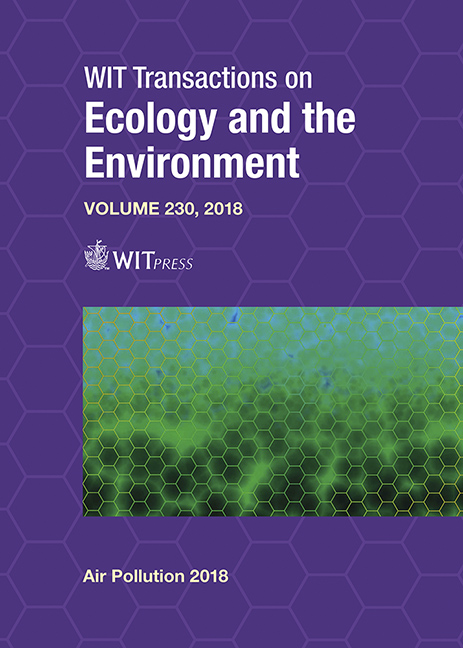POLLURISK: AN INNOVATIVE EXPERIMENTAL PLATFORM TO INVESTIGATE HEALTH IMPACTS OF AIR QUALITY
Price
Free (open access)
Transaction
Volume
230
Pages
9
Page Range
557 - 565
Published
2018
Paper DOI
10.2495/AIR180521
Copyright
WIT Press
Author(s)
PATRICE COLL, MATHIEU CAZAUNAU, JORGE BOCZKOWSKI, MAËVA ZYSMAN, JEAN-FRANÇOIS DOUSSIN, ALINE GRATIEN, GENEVIÈVE DERUMEAUX, MARIA PINI, CLAUDIA DI BIAGIO, ÉDOUARD PANGUI, CÉCILE GAIMOZ, SOPHIE HÜE, FRÉDÉRIC RELAIX, AUDREY DER VATANIAN, ISABELLE COLL, VINCE
Abstract
The World Health Organization (WHO) estimated that there were 3.7 million premature deaths due to air pollution in 2014, confirming that air pollution is a great environmental risk to health. Air pollution is responsible for a loss of more than 3% of productivity (via premature death, incapacity for work due to diseases, etc.). The studies conducted so far show that the effects of air pollution on health depend not only on the quality of the surrounding air, but also on the subjects exposed and their individual vulnerability (asthma, COPD, obesity, etc.). Despite the evidence on the adverse health effects of exposure to air micro-pollutants there are still uncertainties about the nature of these effects and progress to be made on their quantification. This limitation of our knowledge is mainly attributed to the complexity of the polluted atmospheres, and to the great difficulty to model the impact of realistic situations of exposure. Among the constituents of air pollution individually associated with deleterious effects on health, we consider gaseous pollutants (O3, SO2, CO, NOx, VOC …) and particles (PM10, PM2.5, ultrafine). In order to realistically simulate atmospheric mixtures in all their complexity in the laboratory, environmental chemists have developed photo-reactors that are equipped to reproduce and control atmospheric processes such as solar radiation, concentrations of species and the timely injection of aerosols and gases. These atmospheric simulation chambers thus offer the possibility of studying the myriad of products resulting from the atmospheric oxidation of primary compounds. Using CESAM, an atmospheric simulation chamber (cesam.cnrs.fr), we have developed a totally innovative platform for exposing mice to realistic atmospheric conditions. Here we present the first toxicological analyses of the organs of these mice after 48 hours of exposure, carried out as part of feasibility experiments aimed at testing this experimental concept, as well as other preliminary results.
Keywords
air quality, health impacts, atmospheric chemistry, pollutants, aerosols, SOA, chronic obstructive pulmonary disease, asthma





